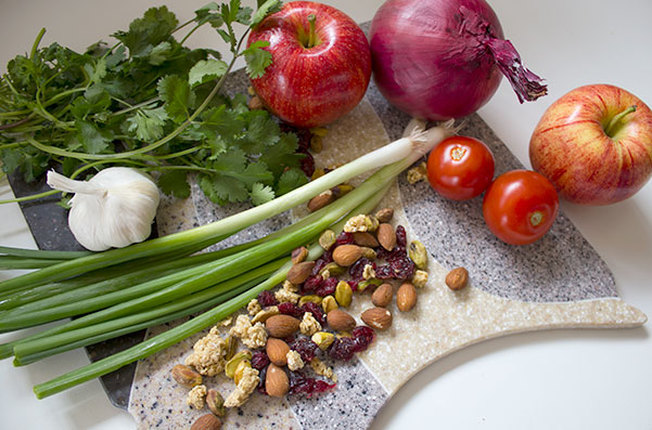|
by Ward W. Bond, PhD
Quercetin is truly a hidden jewel in foods that promote improvements in cardiovascular health, cancer prevention and in our immune system. That’s just a small part that this amazing nutrient can do. Quercetin occurs naturally in a variety of brightly colored plant-based foods. This flavonoid compound has antioxidant and anti-inflammatory properties and may help lower the risk of cancer and heart disease while decreasing blood pressure. According to the U.S. Department of Agriculture, capers contain one of the highest natural concentrations of quercetin. Canned capers, which are the salt-brined flower buds of the Capparis spinosa plant, contain 173 milligrams of quercetin in every 3.5 ounces, or 14.8 milligrams in a typical 1-tablespoon serving. Use capers in salads, dips, pasta dishes and as a flavor-enhancing addition to sauces for seafood or poultry. Capers are high in sodium. To decrease their sodium content and control the saltiness they add to foods, rinse them thoroughly before using.1 All types of onions are high in quercetin. Raw red onions contain 33.4 milligrams of the compound in every 3.5 ounces, while raw white onions supply 21.4 milligrams, scallions have 18.3 milligrams and fresh sweet onions contain 14.8 milligrams. Cooked onions have 24.4 milligrams of the compound in each 3.5-ounce serving. To get the most quercetin out of your onions, use them promptly after purchase. Onions can lose more than 25 percent of their quercetin content if they're stored over a week.2 Fruits with a dark red or blue hue have the highest quercetin content. These include cranberries, which contain 15 milligrams in every 3.5 ounces; raw black plums, with 12.5 milligrams per serving; and blueberries, which have 5 milligrams. Chokeberries, black currants, apples and cherries are also good sources of quercetin. A 2002 article published in "Nutrition" reported that foods prepared by boiling lost a significant amount of quercetin due to contact with heat and water. Whenever possible, eat quercetin-rich fruits raw or only lightly cooked.3 First, let’s talk about its absorption. Like Turmeric, it must be combined to a carrier nutrient, in this case, Quercetin is best combined with the pineapple enzyme bromelain for maximum effectiveness. Here are few facts as to why we need Quercetin everyday:
Cancer Benefits Quercetin is a flavonol type of flavonoid, one of the most prevalent polyphenols in the vegetables and fruits we eat, including the beverages derived from them (like wine and juices). In addition to the antioxidant, anti-inflammatory, and immune-boosting benefits studies have shown quercetin offers, research suggests it may act to prevent the development of new cancer and therapeutically arrest and even regress existing cancer growth.
References 1-3. Foods With the Highest Content of Quercetin. Michelle Kerns 4. Goodsell, David S. Molecule of the Month: Caspases. RCSB: Protein Data Bank (PDB); Rutgers University & University of California, San Diego. [Online] August 2004. http://www.rcsb.org/pdb/static.do?p=education_discussion/molecule_of_the_month/pdb56_1.html. 5. Sagar, S.M., Yance, M.H. and Wong, R.K. Current Oncology: Natural health products that inhibit angiogenesis: a potential source for investigational new agents to treat cancer—Part 1. PubMed: U.S. National Library of Medicine and the National Institutes of Health. [Online] February 2006. http://www.ncbi.nlm.nih.gov/pmc/articles/PMC1891166/. Disclaimer: This website is not intended to replace professional consultation, diagnosis, or treatment by a licensed physician. If you require any medical related advice, contact your physician promptly. Information at DrWardBond.com is exclusively of a general reference nature. Do not disregard medical advice or delay treatment as a result of accessing information at this site.
2 Comments
Denise Goodwin
3/17/2020 05:53:30 pm
Does making onion soup kill the quercetin.
Reply
Dr Bond
3/18/2020 07:45:24 am
Most of the nutrients are killed above temperatures of 250 ore more. Most nutrients end up in the broth, so you may get it from the broth.
Reply
Your comment will be posted after it is approved.
Leave a Reply. |
Archives
May 2022
|

 RSS Feed
RSS Feed